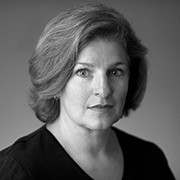As a rule, copywriters write for money. You won’t find many hobbyists. Bring a person’s livelihood into a thing—like writing—and people tend to get smart fast.
So, following that logic—if you want to learn how to write smart, talk to a copywriter.
F. Scott Fitzgerald, Ernest Hemingway, Dorothy L. Sayers, Salmon Rushdie, and Helen Gurley Brown began their careers as copywriters.
I have always believed that writing advertisements is the second most profitable form of writing. The first, of course, is ransom notes.
Phil Dusenberry, American Advertising Hall of Fame
That’s not to say copywriting made them great writers. But the disciplines required to write professional copy gave them the skills they needed to enhance their remarkable literary narratives.
They’d learned when to delete unneeded words, when to consolidate tasks, and how to use words to trigger emotion.
To their credits, you won’t hear people complain:
- Hemingway needed to thin his writing out
- Sayers could have found a way to get more writing done
- Fitzgerald, Rushdie or Gurley Brown needed to connect more with people on an emotional level
Each of these writers used copywriting to produce an abundance of memorable work.
And isn’t that what we all want?
“I’m always searching for emotion,” Dusenberry said in a Times interview. “In an age when most products aren’t very different, the difference is often in the way people feel about the product.”
In this article, I’m going to take you into the minds of talented wordsmiths from here and now—in search of tools, tricks and hacks to improve your penmanship.
Each writer—a hot copywriter with a distinct style—lifts the veil to reveal at least one useful thing that you can implement today to create a better blog.
Don’t shrink from their simplicity. Followed scrupulously, these insights will elevate the quality of your work.
In the advertising business, a good idea can inspire a great commercial. But a good insight can fuel a thousand ideas, a thousand commercials. Phil Dusenberry
Following are 8 tips, tools and hacks from the professionals. We know that they will bring a higher level of craft to your blog and website.
1. Remove the word “that”.

Tip: Avoid using ‘THAT’. It clutters your copy without adding value.
Sarah Mitchell is the Head of Content Strategy at Lush Digital Media. Apart from being an accomplished copywriter, she’s a speaker, editor, podcaster, blogger and Advocate for #agedcare.
Her tip: You can delete THAT from most sentences without changing the meaning. Sometimes you have to change the verb tense but it usually makes the sentence better. Here are two examples I use in my writing workshop:
- Research shows
thatimages used in social media are more effective than words alone. - Piktochart is a design app
that requiresrequiring little effort to produce beautiful, high-quality infographics.
Removing ‘that’ at every opportunity forces you to change the way you write. I promise you’ll love the result.
2. Speed write in “chicken chunks”.

Tip: 15-minute writing sprints help you avoid writer’s block.
Lorrie Morgan-Ferrero is the president of RedHotCopy and an award winning copywriting strategist. Lorrie also trains entrepreneurs how to write.
She avoids writer’s block AND gets a heck of a lot done because of one simple rule: she used a timer to laser focus on her writing for 15 minute increments.
During that chunk of time, she allows herself to do nothing but write. When the timer goes off, she stops whatever she’s doing and takes a five minute stretch break. It’s that simple.
Focusing on a task in a measurable chunk of time propels you toward reaching your goals.
- Get a kitchen (or chicken) timer.
- Set it for 15 minutes.
- Get rid of ALL DISTRACTIONS.
- WRITE LIKE A MANIAC.
- When the timer goes off, STOP, no matter where you are.
3. Delete your first paragraph.

Tip: Delete your first paragraph and see if your copy still works.
Tom Albrighton is the founder and director of ABC Copywriting. He’s the co-founder of the Professional Copywriter’s Network. He also supports a handful of health and family charities in Norfolk UK, his home.
This tip is akin to the respected strategy of cutting 10% of your work as a whole. Why?
Writers tend to warm up in their first words.
While a slow warm up might grease the wheels from the writer’s standpoint, lack of inertia can stall interest for the reader. Lop off the slow bit. Then draw your reader into the narrative through the force of momentum.
4. Make your customer the protagonist.

Tip: Make the reader the star of whatever story you’re telling.
Amy Hoy is a software engineer and app developer who has successfully made the switch to copywriting. She and her business partner, Alex Hillman, are the force behind UnicornFree. They’re wildly funny B2C product development experts and savvy marketers.
Her tip: Your customer is the hero in his or her own story. Don’t write about “the product will x” — write “You will x (with the product)”. Pull the reader into your writing by giving them something to imagine.
5. Every article has one message.

Tip: Every article has one message. No more, no less.
Bruce Kasanoff is silent strength. These days, he plies his skills as a ghostwriter and speaker. He’s so modest and unassuming, you wouldn’t guess that apart from being the author of 4 successful books on business, he’s also a LinkedIn Influencer. He graduated from Wharton, and if that’s not enough, he worked on the Ogilvy & Mather team in the mid 90s that helped change the brand positioning for IBM.
The One-Message Rule: 95% of writers violate the one message principle, which is why their pieces have low engagement online.
People only share the content they understand and find easy to repeat. Every article you write should have one clear message, one takeaway for the reader that helps them take the next step.
6. Follow companies that measure their marketing.

Tip: Always stay on top of what’s working by following companies who lead the way.
Pam Foster is a certified SEO Copywriter and the queen of niche leveraging. She’s the PetCopywriter. Do a search. You’ll see. She rises to the top of search queries. She’s made a brilliant career of writing for all sorts of pet industry companies.
Her tip: If you’re not an expert, follow someone who is. That way you can be aware when something new comes along.
7. Write in a natural voice.

Tip: Don’t be stiff.
Lorraine Kauffman-Hall is Managing Partner at Attain Marketing. Lorraine has over 20 years of marketing and public relations experience working with both start-up and Fortune 1000 companies. Industries include technology and financial services companies.
Her tip: Even if it’s a hardcore technology piece, everyone loves a little levity.
Today’s audience attention span is shrinking, so you must do all you can to make your writing engaging, not robotic.
8. Shuck the norm and do the unexpected.

Tip: Add a dash of the unexpected.
Rita Mailheau is an Information Security and Technology copywriter. She’s big on research with 30 years of experience. She’s written for cyber security, law enforcement, web hosting and a data center.
In some ways, content marketing is akin to show business. Give people what they expect but go somewhere new.
Even technical audiences appreciate humor or surprise.
Love what you’re writing and the reader will too.
But be careful. Know when you have enough. A little bit goes a long way.
You always leave them wanting more.
Guest Author
Rita Mailheau– Bookworm by day, keyboard-wielding copywriter by night. I write fancy stuff on the internet. History geek and headline hoyden on my days off. And my baseball team is better than yours — Go Padres!








